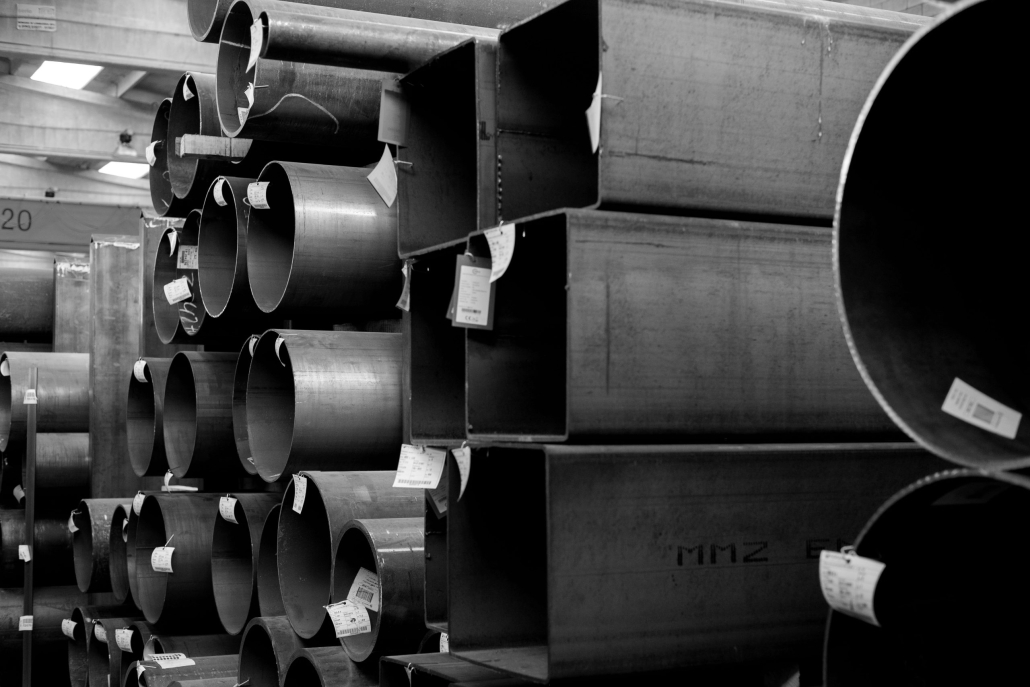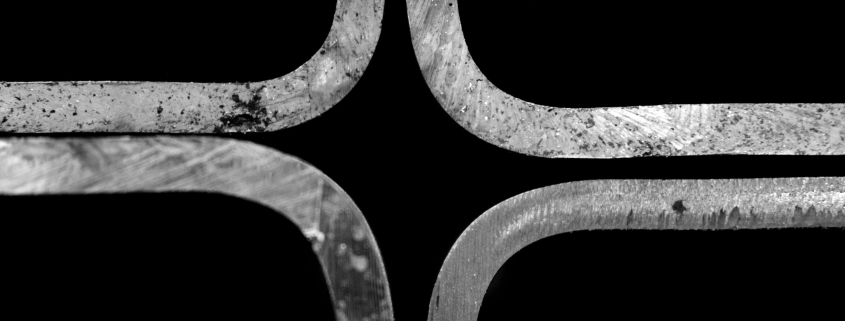EN 10219 vs EN 10210: All You Need to Know
Einführung
When it comes to selecting the right structural steel tube for your project, understanding the key differences between the standards is essential for ensuring performance, durability, and cost-efficiency. EN 10219 Und DIN EN 10210 are two of the most commonly used standards in manufacturing welded and seamless steel tubes for various applications, including infrastructure and green energy sectors. EN 10219 vs EN 10210, we’ll compare these two standards regarding manufacturing processes, product shapes, steel grades, heat treatments, and other critical factors to help you make an informed decision for your project in this article.
1. Overview: EN 10219 vs EN 10210
EN 10219: This standard is for cold-formed, welded steel tubes. It primarily applies to structural hollow sections made by welding thin steel plates at ambient temperatures. These tubes are usually manufactured by cold-forming steel sheet or strip, which is then welded to form the tube shape. They are widely used in building construction, bridges, and certain energy applications.
DIN EN 10210: Diese Norm umfasst hot-formed (extruded), seamless steel tubes. Tubes manufactured under this standard are formed at high temperatures, which provides them with distinct mechanical properties, including greater strength and resistance to fatigue. They are generally used for more demanding applications, including heavy structural support in critical infrastructure projects and certain green energy technologies.
2. Manufacturing Process: EN 10219 vs EN 10210
EN 10219 (Cold-Formed)
Herstellungsprozess: Cold-formed tubes are produced by rolling or bending steel sheets at room temperature and then welding the edges together to form the tube. This process is faster and more cost-effective, but it limits the material properties of the finished product.
Schweißen: Cold-formed tubes are welded by processes like electric resistance welding (ERW), which uses heat generated by an electric current to fuse the edges of the tube.
Eigenschaften: Cold forming increases surface hardness but lowers strength compared to hot-formed tubes. Due to the nature of the manufacturing process, there’s also a potential for residual stresses.
EN 10210 (Hot-Formed)
Herstellungsprozess: Hot-formed tubes are made by extruding or rolling steel at high temperatures (usually above 900°C). The material is then controlled and cooled. This process allows for better control of the material properties, resulting in higher strength and improved ductility.
Seamless Production: One key difference is that EN 10210 tubes are nahtlos, meaning they have no welds. This makes them inherently stronger and more resistant to certain types of failure, such as weld defects common in cold-formed products.
Eigenschaften: Hot forming improves the material’s strength, especially at high temperatures, and leads to a more uniform structure with better mechanical performance overall.

EN 10219 vs EN 10210 Structural CHS SHS RHS
3. Steel Grades and Material Properties: EN 10219 vs EN 10210
EN 10219: The standard covers mild steel grades like S235, S275, Und S355, which are commonly used for general construction purposes. These grades are designed for good weldability, moderate strength, and ease of fabrication.
DIN EN 10210: The hot-formed tubes under this standard can include higher-grade materials such as S355J2H, S420, Und S460. These grades offer improved mechanical properties, such as better fatigue resistance and enhanced strength, making them ideal for heavy-duty applications.
4. Dimensions, Tolerances, and Wall Thickness
EN 10219:
Maße: It is available in a wide range of sizes, from small to large diameters (10mm up to 1000mm or more).
Toleranzen: Cold-formed tubes generally have slightly higher tolerances for dimensions than hot-formed tubes. Wall thickness tolerances are typically ±0.5mm.
Wandstärke: Depending on the requirements, the wall thickness can range from thin (1mm) to thicker sections (up to 20mm or more).
DIN EN 10210:
Maße: Hot-formed tubes are generally available in a wider range of sizes, including large diameters and thick-walled sections, which are essential for load-bearing structures.
Toleranzen: Hot-formed tubes have stricter dimensional tolerances and better uniformity compared to cold-formed products. The production process allows for tighter control, leading to more precise wall thickness and straightness.
Wandstärke: Tubes can be manufactured with thicker walls (typically over 5mm) and in larger sizes, providing higher load-bearing capacity and durability.
5. Corner Radius: External and Internal
EN 10219: Cold-formed tubes typically have sharper corner radius due to the process of bending steel at lower temperatures. This can result in stress concentrations at the corners, which may affect the structural integrity in some applications.
DIN EN 10210: Hot-formed tubes generally have larger, more uniform corner radius, thanks to the hot-forming process’s ability to shape the steel without inducing stress concentrations. This improves the tube’s overall strength and minimizes weaknesses in the corners.
6. Heat Treatments
EN 10219: Heat treatment is generally not a part of the cold-formed tube manufacturing process, except in some cases where stress-relieving may be applied to reduce internal stresses and improve weld quality.
DIN EN 10210: Hot-formed tubes often undergo normalizing oder stress-relieving heat treatments to further enhance mechanical properties, such as yield strength, toughness, and fatigue resistance. This is one of the reasons why hot-formed tubes are preferred for high-strength applications.
7. Performance and Durability
EN 10219:
Leistung: Cold-formed tubes are suitable for applications with moderate loads Und general structural use. They are ideal for situations where the material’s ultimate strength isn’t a critical factor.
Haltbarkeit: While these tubes are durable for most structural applications, their ability to withstand fatigue, cyclic loading, Und high-stress conditions is generally lower than that of hot-formed tubes.
DIN EN 10210:
Leistung: Hot-formed tubes excel in high-performance environments, offering excellent resistance to fatigue Und stress. They are preferred for projects requiring high load-bearing capacity, such as in bridges, industrial equipment, Und high-rise buildings.
Haltbarkeit: The higher strength and uniform material properties make hot-formed tubes much more durable under extreme conditions and long-term performance.
8. Anwendungen
EN 10219: These tubes are often used in applications that require economical solutions with moderate performance requirements. Common uses include:
Building construction (frameworks, scaffolding)
Green energy infrastructure (wind turbine towers, solar panel frames)
Bridges and transportation (light structural support)
DIN EN 10210: Due to their superior strength and performance, hot-formed tubes are ideal for more demanding applications, such as:
Heavy construction (high-rise buildings, bridges, industrial infrastructure)
Offshore and marine structures
Energy production (oil rigs, power plant equipment)
Green energy (geothermal or hydroelectric structures)
9. Cost: EN 10219 vs EN 10210
EN 10219: Cold-formed tubes are generally more cost-effective due to the simpler, quicker manufacturing process. This makes them suitable for projects with tight budgets or less stringent performance requirements.
DIN EN 10210: Hot-formed tubes are more expensive because of the higher energy costs involved in the manufacturing process and the additional treatment steps. However, they provide better long-term value in applications where higher strength and durability are necessary.
10. EN 10219 vs EN 10210: Which One to Choose?
Choose EN 10219 if you need Lower-cost options for general construction, Tubes for lighter load-bearing applications, and Moderate performance with quick production times.
Choose EN 10210 if you need Higher strength, durability, and fatigue resistance, Seamless tubes for critical applications, and Longer-lasting performance under extreme conditions.
Abschluss
Both EN 10219 (cold-formed) Und EN 10210 (hot-formed) steel tubes have their unique advantages and are suited for different types of applications. By understanding the differences in manufacturing processes, material properties, dimensions, and tolerances, you can make the right decision for your infrastructure or green energy project. Always consider factors like load-bearing requirements, environmental conditions, and budget constraints before choosing the appropriate tube type. By understanding these key differences, you can ensure that your project meets both performance and cost expectations, contributing to the success of your infrastructure or green energy endeavors.




